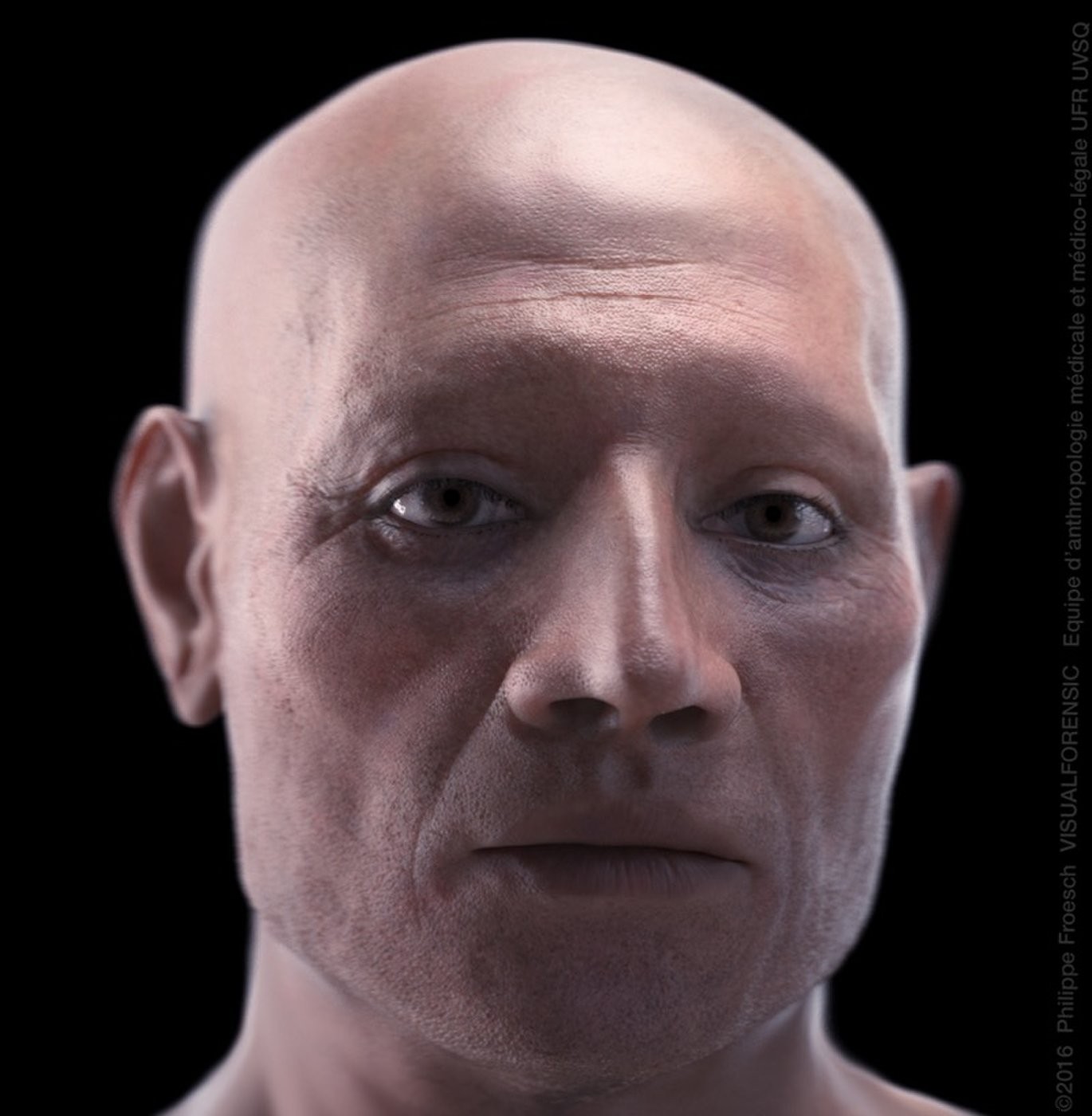An international team of researchers reconstructed, using computed tomography, the face of Nebiri, an Egyptian dignitary who lived during the reign of Pharaoh Tuthmosis III, of the 18th dynasty (1479-1425 BC).
Nebiri's tomb in the Valley of the Queens (identified as QV30) was looted in ancient times and his body destroyed. But the Italian Egyptologist Ernesto Schiaparelli was able to recover his head, as well as the containers that contained his internal organs, in 1904 during the systematic excavation of the place that began a year earlier, and whose culmination would be the discovery of the tomb of Nefertari. Q>
The Valley of the Queens is the Egyptian necropolis located to the southwest of the famous Valley of the Kings. Queens and princes of the 19th and 20th dynasties were buried here, although tombs from earlier times have also appeared, as is the case of Nebiri.

Chemical analyzes revealed that both the head and the brain had been carefully embalmed and treated with a mixture of animal fat and vegetable oils, aromatic plants, coniferous resin and pistachios. Bandages with these substances had been carefully inserted into all parts of the head through the nose, ears, eyes and mouth.
In 2015 it was discovered that Nebiri, whose remains are kept in the Egyptian Museum in Turin, had the oldest known case of chronic cardiovascular disease, which is why she would have died between the ages of 45 and 60.

This type of embalming reinforces the idea that Nebiri belonged to the Egyptian elite, possibly a high-ranking official but not associated with royalty.
Philippe Charlier, an anthropologist at the University of Paris 5, assured Live Science that the reconstruction of the face is a serious forensic work based on the latest facial reconstruction techniques and that is an anatomical reality .
Nebiri's face shows him as a man with a prominent nose, wide jaw, straight eyebrows, and moderately thick lips. However, it is only a facial approximation that does not take into account, among other things, the possible real external characteristics and singularities.
